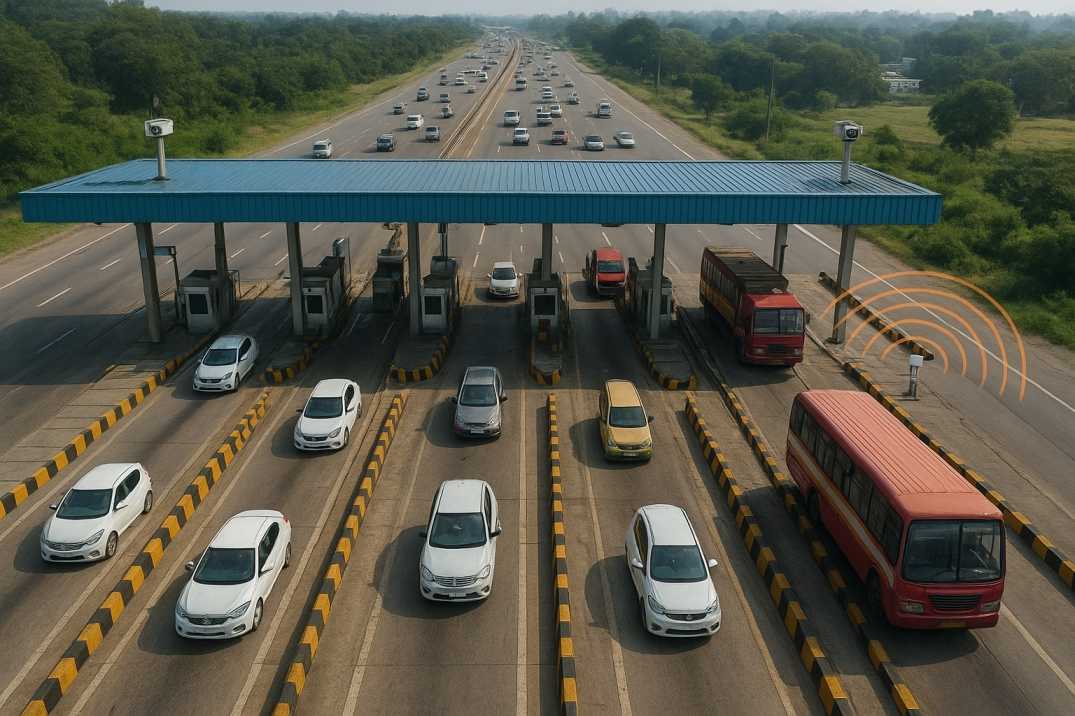Contact Us
RoadVision AI
Private Limited
Office No. 308 & 310, B Block
Ansal Chamber - 1, Bhikaji Cama Place,
Near Engineers India Limited (EIL) Bhawan, New Delhi - 110066
© 2024 | RoadVision AI | All rights reserved
India’s road network is the second largest in the world, spanning over 6.3 million kilometers and carrying the majority of freight and passenger movement. Yet, poor upkeep continues to be a bottleneck for safety, efficiency, and sustainability. Traditional methods of inspection and repair are slow, inconsistent, and often reactive instead of preventive. This is why India is witnessing a shift toward AI-based road maintenance, digital road maintenance systems, and highway asset management solutions that enable proactive, data-driven decision-making.
This article explores the top 10 road maintenance challenges in India and how advanced technologies such as road condition monitoring, AI-powered inspections, and predictive analytics are changing the future of road asset management in India.

Potholes are one of the most visible and dangerous road maintenance challenges in India. They increase accident risks, slow down traffic, and raise vehicle operating costs. Traditional inspections often miss early-stage surface cracks that later develop into potholes.
With AI-based Pavement Condition Surveys, authorities can detect cracks, rutting, and early distress signs before they worsen. This allows timely interventions, saving costs and improving road safety.
India’s highways face unprecedented stress due to overloaded trucks and increasing vehicle counts. This accelerates pavement deterioration and reduces road life.
Highway asset management solutions powered by AI provide accurate data on road capacity, traffic flow, and asset wear. By combining traffic surveys with road condition data, decision-makers can implement better weight control policies and schedule repairs proactively.
India records one of the highest numbers of road accidents globally, with poor infrastructure quality being a major cause. Traditional safety audits are manual and infrequent.
AI-driven Road Safety Audits make it possible to conduct continuous, digital inspections, flagging hazardous stretches, missing signage, and accident-prone zones. This enables authorities to implement targeted safety measures.
Monsoons, heatwaves, and floods accelerate pavement deterioration. Roads in India often lack real-time monitoring systems to track weather-related damage.
With AI-powered road condition monitoring, authorities can analyze environmental data alongside asset health, helping schedule preventive maintenance after seasonal extremes.
Manual inspections require large teams, are time-consuming, and often result in inconsistent reporting. In a vast country like India, scaling manual systems is almost impossible.
Digital road maintenance systems use computer vision, LiDAR, and machine learning to automate inspections. This reduces costs, speeds up reporting, and ensures consistency across different states and highways.
India’s road data is often scattered across agencies, making it difficult to coordinate maintenance and funding.
Modern road inventory inspections powered by AI centralize asset data into a unified digital platform. This creates visibility for all stakeholders, allowing smarter allocation of resources.
Most road failures are detected only after they cause significant damage or disruptions. This reactive approach leads to higher repair costs and extended closures.
AI-enabled case studies from global projects show how predictive models identify early signs of structural weaknesses, enabling timely interventions that minimize downtime and cost.
Road maintenance consumes a large portion of infrastructure budgets. Inefficient allocation of funds worsens the problem.
By leveraging AI-powered highway asset management solutions, authorities can prioritize repairs based on severity and usage, ensuring budgets are spent where they deliver maximum impact.
Indian cities face heavy congestion, leading to higher wear and tear on urban roads. Continuous monitoring is required to balance maintenance with traffic flow.
Traffic surveys combined with AI models provide accurate congestion data, allowing authorities to schedule roadwork with minimal disruption.
Despite the benefits, adoption of AI in road infrastructure is still at an early stage in India. Many agencies rely on outdated methods.
By exploring the RoadVision AI blog and global case studies, stakeholders can learn how AI-based road maintenance and digital road monitoring systems are reshaping infrastructure management worldwide.
India’s road sector faces significant challenges, but the adoption of AI-based road maintenance and digital road condition monitoring can fundamentally transform the way assets are managed. From early pothole detection to predictive maintenance and safety audits, road asset management in India is entering a new era of efficiency and sustainability.
RoadVision AI is revolutionizing road infrastructure development and maintenance by leveraging cutting-edge AI in road safety and computer vision technology. Through advanced digital twin technology, the platform performs comprehensive road safety audits, enabling early detection of potholes, cracks, and other surface issues, ensuring timely repairs and improved road conditions. It also enhances traffic surveys by providing data-driven insights to address challenges like traffic congestion and optimize road usage. With a focus on building smart roads, RoadVision AI ensures full compliance with IRC Codes, empowering engineers and stakeholders to reduce costs, minimize risks, and improve the overall road safety and transportation experience.
If you are a government agency, contractor, or infrastructure developer looking for cutting-edge road asset management solutions, book a demo with us today.
Q1: What are the biggest road maintenance challenges in India?
The major challenges include potholes, overloaded traffic, high inspection costs, scattered data, and weather-related deterioration.
Q2: How does AI help in road asset management?
AI automates inspections, detects early signs of damage, and predicts maintenance needs, reducing costs and improving road safety.
Q3: Is AI-based road maintenance already being used in India?
Yes, several pilot projects are using AI-powered road condition monitoring and digital asset management systems to improve infrastructure upkeep.